It’s been about two years since I first wrote about an automated bicycle shifting system, then called BioShift. The device would control all shifting on your bike for you, based on understanding your optimal gearing and the demands you placed on the bike. If you sprinted, it would automatically gear accordingly. And it would offer modes to match a given heart rate or power effort.
At the time the concept was just that, a concept. It wasn’t a saleable product, nor something you could even pre-order. However, that’s since changed. As of this past fall you could actually order the product, now called ProShift, and attach it to your bike. Assuming your bike had an electronic shifting system like Shimano Di2, SRAM RED eTap, or Campagnolo EPS. So I did exactly that. The folks at ProShift sent over a loaner unit to try out this past summer, and I’ve been toying with it since. A lot of toying in fact, but we’ll get to all the details here later in the post.
First I’ll cover the basics of how it works, then how well it works out on the road, and then the direction I think the technology and the company are likely to move towards next.
(Side note for long-time BioShift watchers: When I first tried out the product a few years ago, the company was run by Armando Mastracci and called Baron Biosystems and the product BioShift. Shortly thereafter, they were also demonstrating a software platform called Xert. Since then the company has effectively been split in two. Xert (the software) is now run by Armando out of Toronto under the Baron Biosystems company name, while BioShift was renamed to ProShift is under Baron Controls and run by his brother Ennio Mastracci out of Texas. These days they are two separate companies which rarely (if at all) intersect. I’ll be covering the coolness of Xert in a separate upcoming post.)
Hardware Basics:
The ProShift system is rather simplistic in some ways, yet complex in others. At first glance it appears to be a head unit, roughly the size of a Wahoo ELEMNT. And in some ways it is. It shows your speed, heart rate, cadence, power, and connects to various ANT+ sensors. It can display numerous metrics at once, and allows you to enable specific automated shifting modes. Sounds like a normal bike computer, right?
Yes, except one minor detail: It can’t record any of that data.
The other differentiator is that it has wires coming out of it. Three different wires to be precise. Two wires create what are secondary shifters, much like Blips on eTap or extended shifters on Shimano. These can both be used for shifting as well as operating the menu system.
The third wire connects to your Di2 (or eTAP or Campagnolo) junction box. This is how it interfaces with your shifting system. While there are wireless shifting standards (SRAM and Campagnolo use the ANT+ Gear Shifting standard, Shimano uses a private-ANT variant of that), those standards actually don’t enable the shifting of gears themselves. Rather, they’re for recording the data. It’s read-only. So a wire is needed to light the whole system up.
That wire then connects into the junction box as noted above:
The unit requires your bike have electronic shifting, and is compatible with the following electronic shifting systems:
– Any Shimano Di2 system: Dura-Ace M9070, Ultegra 6770/6870, XTR M9070, and Alfine;
– SRAM Red eTap (via Wired or Wireless)
– Any Campagnolo EPS system: Athena, Chorus, Record and Super-Record (V1, V2 and V3).
Now the wireless integration to SRAM eTap is actually kinda interesting. See normally you connect to the junction system on the other electronic shifting components, so it’s still wired, which is fine. And that’s true of SRAM eTAP as well, they can also plug into the Blip Box. Except eagle-eyed readers will probably notice they’ve got an option for eTAP that’s completely wireless, but at an added fee of $250USD.
Within that fee they’re actually taking a Blip Box and building it into the internals of the ProShift system. I note this because some will wonder whether it means that SRAM has given away the keys to the wireless shifting kingdom, but in reality, it’s just a bit of ‘creativity’.
Speaking of added functionality, they also rolled out the ability to connect to the Garmin Varia heads up display this past fall. That allows one to see your power/speed/cadence/HR/shifting data on the Varia heads up display, versus on the ProShift bike computer. They’re able to do this because Garmin is actually using the open ANT+ standard for a second display. Thus ProShift (just as Wahoo, Lezyne, or anyone else) can display any data they’d like on Varia. Pretty cool.
With that – you’ve got the entire kit ready to roll on your bike. On the back of the box is a standard Garmin quarter-turn mount. That allows you to use any Garmin 3rd party mount you like. For example, in my case on my triathlon/TT bike I used the Barfly TT mount; works perfect:
Now that the hardware is sorted, we’ll boot up the system. There’s no on/off switch, but rather just pressing one of the buttons will turn on the unit. Similarly, if it doesn’t detect any sensor data for a while, it’ll just quietly turn off. The company says it gets about 50 hours of battery life per charge (uses a standard mini-USB port).
Once booted it’ll go through a scan of ANT+ sensors nearby, picking up sensors for power, speed, cadence, and heart rate. This is how it can display the data on the screen during the ride.
Note that speed/cadence/power sensors are required in order to use those inputs as control. Said differently, in order for the system to know when to shift, it’s gotta have something within it that tells it what’s actually happening with power/speed/cadence, as the unit itself is only able to monitor the current gearing.
Once it’s done with that there’s menus to setup configuration settings. These include chainring and cassette configuration, as well as aspects like ideal cadence and your FTP.
Your specific hardware configuration information (chainrings/cassettes) is absolutely critical to proper/clean operation, and to a large degree so are the personal settings like cadence and FTP. Without that you may find it’ll shift at places that don’t feel natural.
With that we’ve got the basics covered, so we’ll head out onto the road and talk a bit more about operation there.
Out on the road:
Now that we’ve got everything all setup, it’s time to head outside and give things a whirl. While you can use it on a trainer, neither the company nor myself would recommend it. The company notes issues below 100w (i.e. easy pedaling in between intervals), and I found it was often a bit wonky at other wattage levels, likely due to tiny variations of how a trainer responds vs how the road responds.
In any case, now that we’ve started riding, the ProShift system will by default not be doing anything other than watching what you’re doing. It’s not engaged yet and is considered in Manual mode, as indicated on the screen and by the flashing blue LED lights. Instead, it’s monitoring shifting and will quickly figure out which gears you’ve got selected. It’ll also display any ANT+ sensor data on the screen. The screen isn’t customizable, but can display a fair bit of data, as seen below:
Next, to enable automatic shifting you’ll hold down the right button for about a second. Once you do so the unit’s LED lights will flash green, and ‘Auto’ is now displayed on the screen. This lets you know you’re in automatic mode.
While in automatic mode the unit will do as you’d expect, shift automatically. However, you can override shifts at any time just as you normally would. When you do so the unit will suspend any further automatic shifts for the next 20 seconds. There’s lots of use cases for this that are handy, such as quickly down-shifting for an unexpected stop, or just because you don’t like the specific gearing it’s in.
While in automatic shifting mode it’s aiming to find the most optimal gear, which is largely based on your optimal cadence (though not exclusively). It’s this little bit where their algorithm magic resides, as it aims to keep you pedaling at the most efficient level, despite the power output you’re putting out. This mode is simply called “ProShift”.
When it comes time for the unit to automatically shift, it’ll briefly blink one of the LED’s, giving you a momentary cue that something is about to change. Else, it’s a little bit unnerving to have the bike shift on you, especially while applying full power.
However the ProShift mode isn’t the only mode. The unit can also be configured for heart rate control, which is designed to keep you at a given target heart rate (HR). This can be useful if you’re focused more on HR zones than power zones.
In addition, through the settings menu you can actually turn the shifters into a synchronized shifting mode, even while manually controlling it. This allows you to iterate up/down the gears without thinking about front/back shifters. It just figures out the next most logical shift.
So does it actually work well?
Well, that’s where things are a bit mixed.
Over the past few years I’ve tried out the system on a number of bikes. Interbike, CES, Eurobike, and when the company visited me in Paris. Then this past summer they sent over a unit to connect up to my triathlon bike, which has Shimano Di2 on it. Since then I’ve been (off and on) trying to get it to work, but without a ton of luck.
The basics of the system do work in terms of connectivity and configuration, however I don’t generally get smooth shifting like I’d expect – it jumps around. We’ve done a fair bit of troubleshooting during these months, without getting to a complete resolution of why it’s finicky on my TT bike. At one point it was suspected it may be due to a non-optimal drivetrain (meaning, my mechanic skills are low). So I actually brought my bike to the Shimano Di2 engineering team (serious) at Eurobike to perfect it. They made it pretty darn perfect. When shifting in manual mode – it’s spot-on silent and efficient.
The ProShift folks have been more than awesome at trying to get it to work on my bike, including firmware updates and plenty of troubleshooting. Of course troubleshooting is further compounded by living in the middle of the city, since doing quick tests on the trainer isn’t valid for this product. Thus we’ve even had conference calls on the side of the road outside the city to troubleshoot.
Still, let’s put aside my bike for the moment.
Let’s assume it’s a ‘me’ problem, and not a ProShift problem. I’ve seen it work on numerous other bikes, so I know the concept can indeed work. I’ve found that it works best when the software is optimized for me, versus generic usage. For example, during the Eurobike and Paris demos, they configured my FTP and cadence ranges – and it was virtually flawless. It was exactly what I thought automatic shifting should be. It just did it magically, and I was thrilled.
Whereas this past fall at Interbike in Las Vegas, it was a generically configured demo bike, and I could tell it wasn’t quite optimal for me. It missed shifts when I’d sprint, where it wouldn’t do that on bikes configured for me. But in many ways that’s just like any other component on your bike. If you’re saddle is too low or your frame too big, it’s not going to give you a good ride.
So this is where I’m a bit conflicted. If I put aside the fact that I can’t get it to work for whatever reason on my bike, then I think the underlying concept is great. And when I say underlying concept – I’m talking to the technology/software that shifts the bike. When it works, it’s awesome and really impressive. It could be of most use to triathletes and time trial situations, where it’s far too easy to find yourself in a non-optimal gear. Or, find yourself at too high of an effort level.
But there are some downsides. As noted the unit doesn’t record any data, so you’ll still need another bike computer on your handlebars (or your wrist). Plus, it’s also pretty big. For a triathlon bike it’s not as bad because it can fit in between the aerobars bars (as I did), but that’s also where many people stash hydration products.
Still, if you can live with those limitations and have a fair bit of extra cash – then it’s something to consider.
The Future:
The ProShift technology has a ton of potential, especially when it’s working. But I’m just struggling a bit to understand who will purchase the product in its current device and price form factor. As I’ve said, I’d love to see the technology ported into something display-less and just operating behind the scenes and plugged into the existing shifting junction box.
That said, I suspect a lot of people will misinterpret what I’ve written in this post, so let me make it super-duper clear. The easiest way I’ve found to do that is bullet points:
1) The future of bike computers is to have automated shifting software features in them. Anyone who says otherwise is kidding themselves. Any company who says otherwise will eventually be out of business, or at least out of that product line. Period. We can already see underlying components of this within Shimano’s lineup and their synchro shift, this is merely the stepping stone to fully automated shifting.
2) When it works, ProShift’s algorithms work well. Over the last 2-3 years I’ve ridden it on numerous bikes in numerous countries at numerous events. On the whole, it works well when they install/configure it. Or when it’s not my bike.
3) When it doesn’t work, it’s incredibly frustrating. It’ll hop around, or shift when you don’t expect it. As noted before, it largely works well on systems they’ve setup.
4) My biggest issue with the product is simply the size. It’s massive when you consider you still need another bike computer. The number of people who will buy a product this big that’s still not a bike computer is…very…very small. I just can’t see a specific consumer for this.
5) I am not saying for them to build a true recording bike computer. God no. That’d be the death of the company. Going down that route is a huge rat-hole that only the biggest and most focused of companies can do (even PowerTap bowed out of that race this year).
6) I’m saying they need to ditch the screen/display components and make it the size of a small Di2 junction box. Configuration as required can happen either via Bluetooth Smart to a smartphone, or coordination with bike computer companies like Wahoo Fitness or Garmin (Connect IQ app). The tech is absolutely present today to do so. There’s no reason I need to interact with this device on my handlebars, since the only thing I do mid-ride is turn it on/off (which can be handled any number of other ways).
7) While the current price is an issue, I think it’s only an issue because of the size/functionality of the unit makes it incompatible with a legit bike computer. I suspect a small in-line system could retail at $499 to this market (people who have already bought a high-end electronic shifting system) and probably do well.
That’s all.
Again, I really want ProShift to succeed, but I just don’t think it can in the current form factor. It’s a device concept that attracts a lot of attention in cycling media circles, and is easy to put on the front of a magazine cover, click-bait title, or YouTube thumbnail. But once you get through the minutia of the size, price, and how it works, much of the sexiness fades away. Which is unfortunate, because the underlying concepts and algorithms are incredibly cool. And it’s those very algorithms that if appropriated correctly could indeed match the image that the cycling media wants to make it out to be.
With that – thanks for reading.
FOUND THIS POST USEFUL? SUPPORT THE SITE!
Hopefully, you found this post useful. The website is really a labor of love, so please consider becoming a DC RAINMAKER Supporter. This gets you an ad-free experience, and access to our (mostly) bi-monthly behind-the-scenes video series of “Shed Talkin’”.
Support DCRainMaker - Shop on Amazon
Otherwise, perhaps consider using the below link if shopping on Amazon. As an Amazon Associate, I earn from qualifying purchases. It doesn’t cost you anything extra, but your purchases help support this website a lot. It could simply be buying toilet paper, or this pizza oven we use and love.

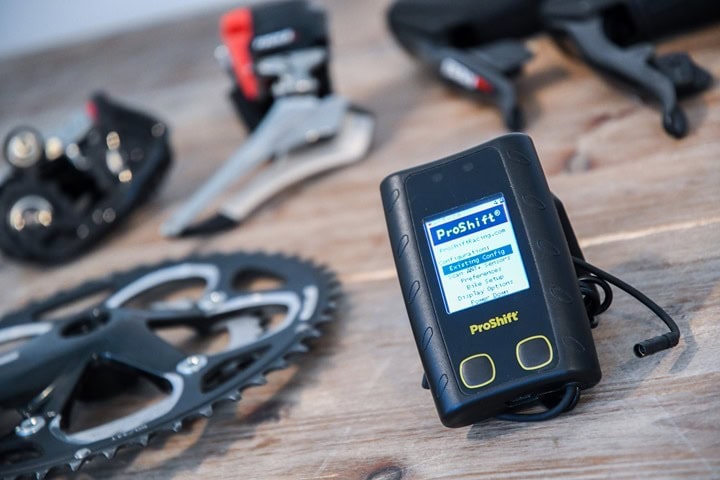
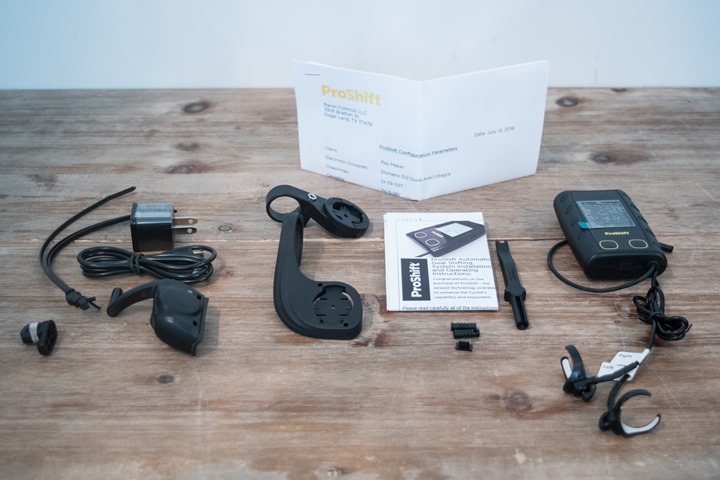
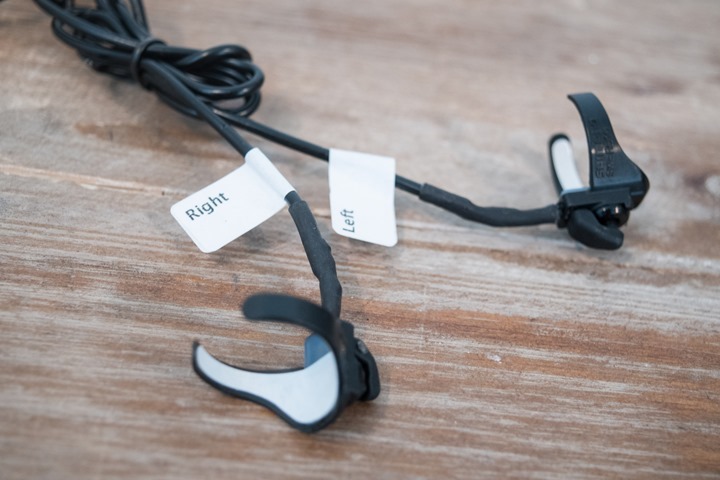
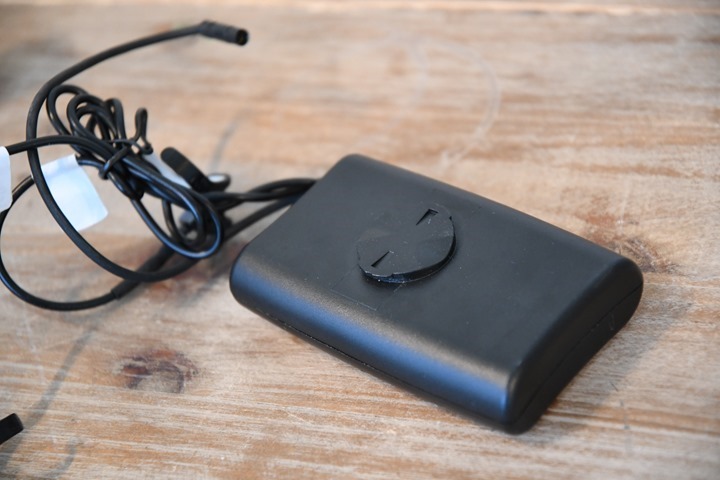
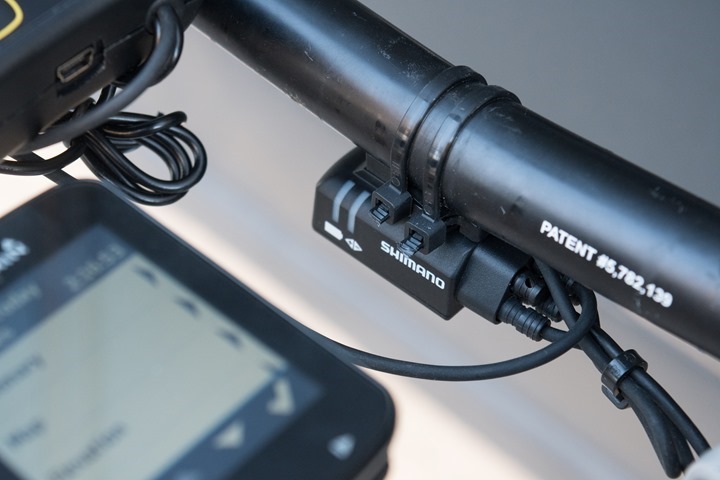



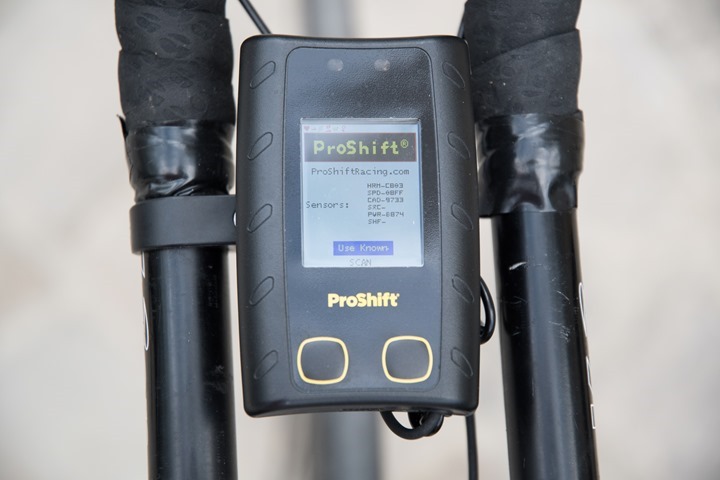
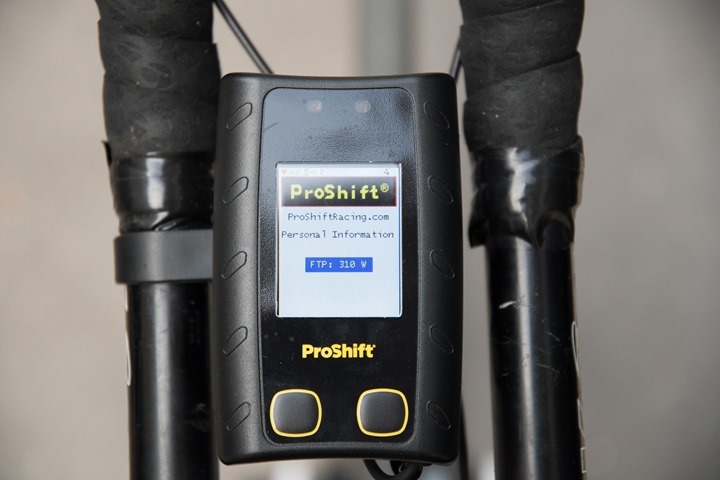
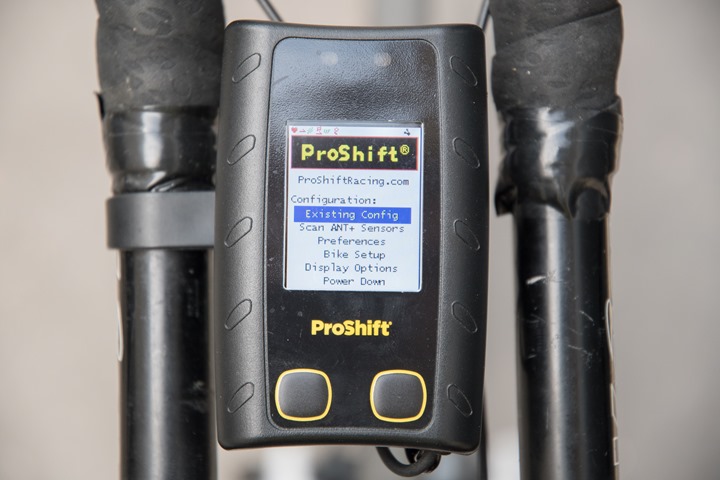
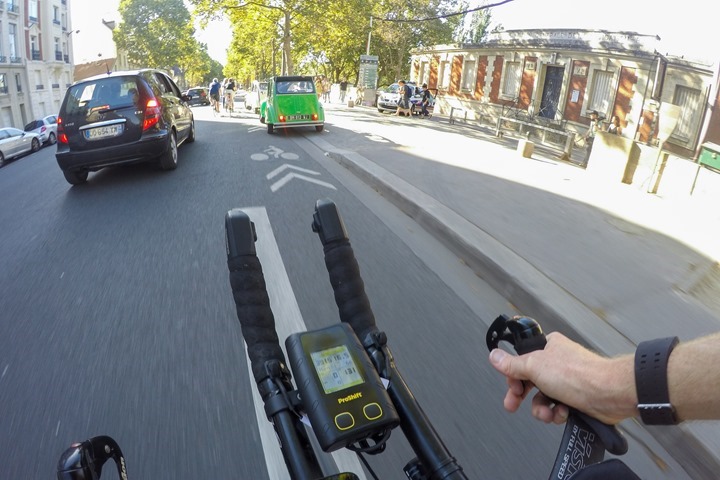

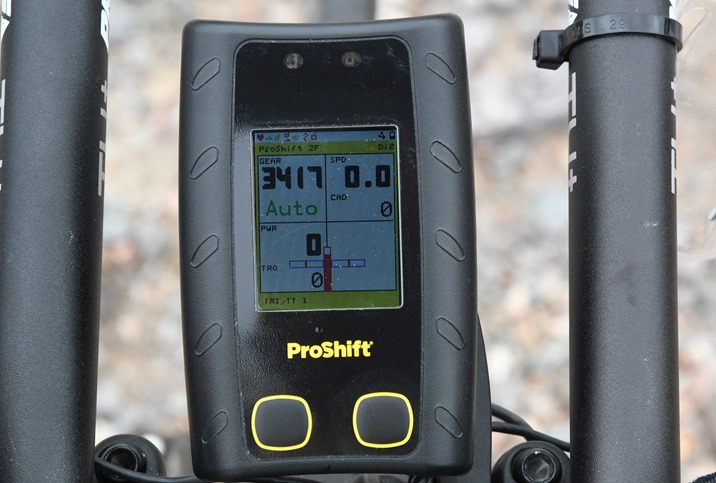
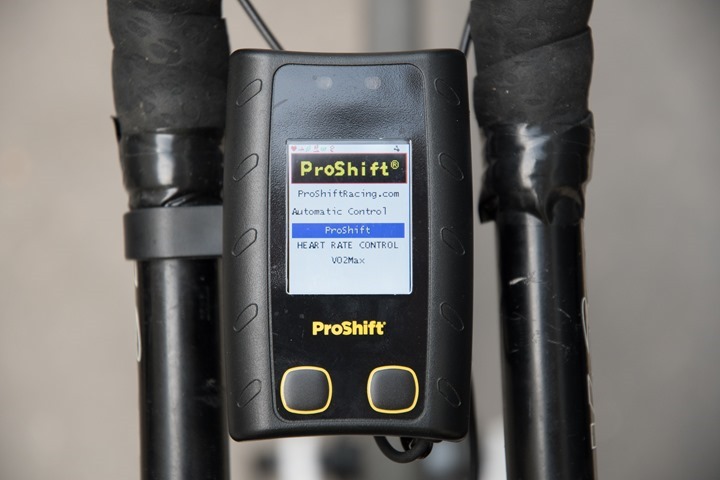
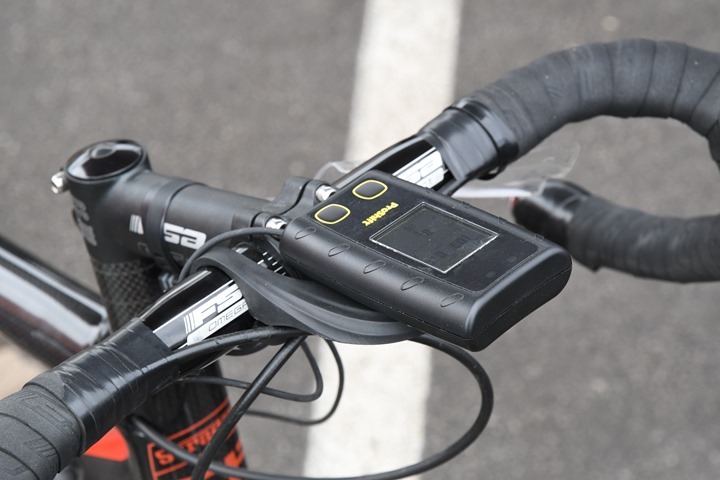
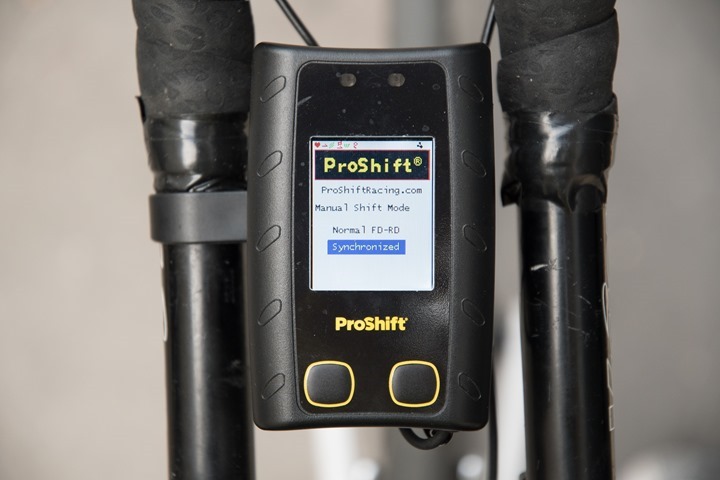
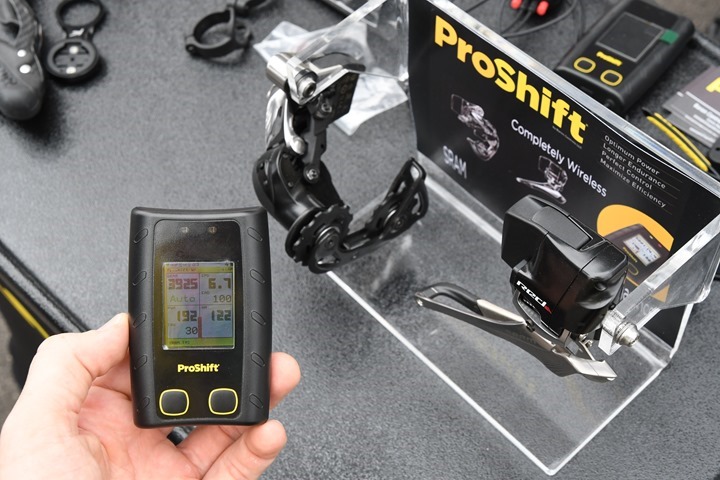
















How does this thing know when you are standing? I, for example, like two complete different cadences when I’m sitting and standing.
BTW, they’re the guys behind Xert/Xert Mobile – this is a very interesting concept in terms of training with power (I think the only online platform / device integration for things like W’bal – would be interested in your take on that.
Close, but not exactly. See my intro paragraph in the first section.
Thanks, somehow missed that one. Yeah, I think Xert looks like coolest thing since perhap Strava (as far as online training platforms go).
I can only see this appealing to casual rec riders tooling along on a bike trail — the ones who “forget how to shift” because they only get out 1-2 times per month.
But those types of riders are highly unlikely to have electric shifters, anyway. And, they are probably only going to ride flat trails, so really only “need” a minimally geared bike with 1 to 5 gears total, maybe the internal hub-type.
OTOH, could be appealing to riders who have, say, lost the use of an arm or hand. But that’s a niche market.
Tom,
I would disagree that a product would be for only rec riders. I think this is a great tool for racing as it is one less thing you have to worry about. Just think if it had integration with Best Bike Split you could be “in the sweet spot” the entire race and not have to think about it as the software takes care of it all. I agree some people will have the manual vs automatic shifting debate as which is really racing but just as most race cars are automatic today as the software can monitor way more data points and make decisions faster… for a race think it could even be predictive as it knows you are coming up to a hill and can get you into the correct gear at the right moment so you maintain a steady cadence
I am closely watching this development as I see it could provide good performance gains but no way I am paying $800 🙂
I’d agree that I think the appeal here is more racing than anything else, but in particular long-course racing.
The idea that it could keep you focused on a race plan is appealing. Perhaps it takes too much out of the ‘game’ of things, perhaps not. But that’s an entirely different discussion.
Right. People ruin their Ironman by applying too much torque in their legs when pedaling in too low a cadence. Buy this thing, use it to train yourself to only ride in upper 80s cadence, then also use it on race day and you’ll have a far better run.
But thats where i disagree. Nobody knows their shifting pattern more than they do. What if you have an off day? We have all had those, we go out and the legs dont respond, or youre not as strong on a particular day. Or you might be super strong another day and going through the gears quicker than you normally would. Shifting is about feel on any given day and that changes.
Oh but you can override the gear selected i hear you cry! Well if thats the case then why need auto shifting.
This is another one of those solutions to a problem that doesnt exist. The IP is totally right, this is fine for a commuter going to work, where shifting is one less thing to worry about, surrounded by buses and cars, but for serious cyclists this wont keep up with any given ride where fluctuations in HR, energy, brain fog, cadence, illness etc play a part. You will be forever fighting and overriding the selected gears.
And i dont care if gear selection does go auto. I can guarrantee you this, that the likes of Shimano, SRam etc will all adopt a “switch it off if you like” option and most people will.
This is fine for a casual cyclist going to the shops. Its not for serious cyclists or amatuer sportive riders.
My testing (over the course of a few years) with it tends to disagree with what you’re saying. It can actually seem to keep up just fine with my intentions. I’ve tried it on mountain courses, flat courses, sprints, etc… It’s reasonably impressive. The thing is that it’s largely focused on finding the most efficient gearing for the power your throwing down, no matter how you feel.
I guess from my limited perspective (and as an American who still drives a manual transmission car .. a rarity these days), it seems like a solution in search of a problem. But I guess it would appeal to some .. but I’ll choose my own gears thank you.
just thinking out loud but this is not going to appeal to most riders but thinking of e-bike users in particular. Doubt they use Strava/Garmin etc and this makes life much easier for them ?
That’s a nice looking green 2CV! Good to seem one tooling around Paris streets still 😀
Yup, they’re used as tourist tours these days, tons of them around – especially as seen in that picture there in the summer. In the winter, not so much.
I really wanted to pull the trigger on this but even though i do splurge loads of dosh on cutting edge bike technology i just couldn’t pay this amount. I see no reason to get one now as its next version will surely be better.
Pleased to see some more info on this, was thinking about it recently. But I’m REALLY looking forward to your take on the Xert platform. I think its great, and it really needs more publicity. I’ve been using it since their open Beta this last summer, and found it worthy enough to subscribe for a year. I used to use WKO+ v3, thought about moving to WKO4 and Training Peaks, but never did. Now I am thrilled with Xert.
It’s long been on my to-do list. Just been swamped with various ‘must get out now’ type hardware stuffs over the past few months (Eurobike, then Interbike, then trainers, etc…).
These few weeks prior to CES are sorta me clearing out all sorts of interesting things.
I just want to shift the front chainring and have the rear derailleur shift to an appropriate cog.
Shimano’s semi-synchro shift is almost there, but has an artificial limit on the number of cogs that can be shifted. So close, but not quite there.
Likewise, if SRAM’s eTap would do this when changing chainrings, I’d buy it in a heartbeat, assuming they get their wide-range derailleurs sorted with eTap — currently a work in progress.
well that’s for being a beta tester Ray.
Shimano has some form of this – don’t they?
They have underlying components that could graduate to this someday. They’ve got syncro-shift, which basically means that you can shift up/down and it’ll figure out whether it’s front or rear derailleur that needs to do the work. You just make it easier or harder.
The challenge that ProShift has, bluntly, is that none of the groupset manufs want to play ball. They sorta play ball by ‘allowing’ ProShift to use the input ports (wired) to control things. But nobody is giving wireless keys (which really only SRAM has). That’s in part because all of these manufs see themselves as one day offering an add-on of their own. So by giving legs to ProShift, they’re effectively hurting their eventual sales some day.
Looking at the four companies (SRAM, Shimano, Campy, FSA), I think it’s fair to say that SRAM and Campy would be best positioned, merely because they have a bit more awareness of consumer electronics than the others do. It’s one thing to make mechanical bike parts, but it’s a whole different beast to make some electronic interface to a phone/app/etc.. Shimano’s new app is a step forward in that arena, but the logistics of it aren’t quite as straight forward as existing Di2 users would like.
Of course, what the groupset manufs fail to realize is that their own implementations will only be a flash in the pan (a year or three at most), before it just shifts into the head units (i.e. Garmin/Wahoo/etc…), where it truly belongs. ProShift’s real game here is to figure out how to move ahead of that tidal wave to secure their position as the preferred algorithm/device, which places them in a better position licensing-wise down the road.
After reading this review I’m even more surprised that it took me 40 years to try fixed gear.
Never coming back.
When this technology is ready, I’ll buy it in a heartbeat- along with a “dream bike” that I’m putting off till this is ready.
I don’t race – I ride for health, fitness and fun. And for time where no one can bother me – it’s my time. But there’s lots of times in my rides where for one reason or another I find myself in the wrong gear and it disrupts my rhythm, which takes away part of the fun.
In a car, I will own a manual till I can no longer find one to buy. But the day my bike can be an automatic, I’ll do this – and I don’t care what it will cost. Of course, it’ll be the last bike I ever buy, but I can’t wait.
Digressing a little, you mentioned:
“Garmin is actually using the open ANT+ standard for a second display. Thus ProShift (just as Wahoo, Lezyne, or anyone else) can display any data they’d like on Varia. Pretty cool”
……so does this mean that someone could come up with an App to display Fenix3 data on the Varia vision and put it in the Garmin App site? I hoped Garmin themselves would enable Varia Vision to work with Fenix3 so it could be used while running as well as cycling (and then I might buy it – when it is only just for Edge products I am less interested.
Any info on this (or the likelihood of making Fenix3 and Varia Vision compatible) would be much appreciated
Richard.
In theory, yes. In practice it’s a bit more difficult.
One would have to implement the ANT+ Remote Display profile within their app, versus just leveraging an existing profile. Not impossible, nor even super hard. Justnot ideal.
Ray — did you try running with Varia Vision? Your review doesnt mention that.
I fear vertical motion would make the reading quite blurry and not so practical.
I actually have Vision, but no device to show running metrics to try.
Would definitely be lovely if sport tracker apps jumped onboard and supported HUD.
Yeah, I tried running with it and it just doesn’t work for me. As you noted, the vertical motion literally almost made me sick – and I’m not one to easily get sick via motion.
How does the girl like you putting oily cranks on her nice clean wooden table in the bakery?? 🙂
I wiped it off first. 🙂
Plus, the eTAP stuff in the brackground is actually totally new out of the box. Haven’t installed it quite yet. 🙂
Your excellent work lets us get the point everytime, without any reasonable doubt !
The summary says many smart concepts often fail because they are practically impossible to make cost and usability match, at least in a cost sustainable way.
Anyway, nice to know there are some companies working to apply new technologies on old and simple projects as plain old bikes !
For TT, wouldn’t a IQ connect app on an EDGE go a long way??? Like the gear shift indicator on never cars.
How big a deal would it be to move it between two bikes?? I have EPS on my road bike and Di2 on the MTB and can obviously only ride one at a time… So I’d want to take this with me, like my EDGE. From the pictures, it doesn’t look like the cables has connectors that allow this??
And speaking of MTB. Did you have a chance to try it in that domain? That’s actually where I’d see the biggest benefit. On a trial, that is up and down all the time and technical enough to occupy your brain with not crashing, you tend to only shift when the CAD is far enough off, for you to really notice.
And now we talk MTB. Shimano’s Synchro shift on a MTB is ABSOLUTELY crap. My latest bike came with 2×11 and only one shifter. Seemed perfect. Bigger gear range (I need that!) but the simplicity of 1×11. But boy was I wrong. End ends up being extra brain load, as you constantly have to be aware when the front shift is coming. Yes, it can be configured to beep on the previous shift. And yes, you might hear it mid race. But then you have to remember it. Might be minutes until next shift. And then you might be caught by surprise by a step climb. And do you really wanna shift the FD with 800w@40rpm?? Not me. So then you end up having find time (and remember) to look at the display to see how many downshift you have left before. Requires you also remember what the current SS mode is configured for.
I gave it a few month, but in the end I had to cave in and drop the 140€ for the left shifter. Which by the way is total crap too. If you happen to press them just a little too hard, they will bend and get stuck. Happens if you have your thumb anywhere near it and you hit a bump. And then you are stuck. In 36/10.
Then new one was even semi sticky out of the box.
Sorry. Got off topic. But I’m not so sure automatic shifting is just around the corner for all….
PS. If Shimano is listening. I’d be happy to give you some constructive feedback. XTR Di2 has potential, but need some new sw. Emergency mode (when a shifter breaks) and semi-synchro-shift mode, to mention a few.
The challenge with a CIQ app is that it wouldn’t be able to control shifting – just read it. Now, if they paired a CIQ app with their own hardware and had the two communicate, that’d definitely do.
Their concern in my discussions with them was that offloading processing to a CIQ app would be too slow. And I agree, it would be. But, that’s not what I proposed. I proposed processing be handled in a tiny little junction box (more difficult processing happens in things the size of a footpod these days), and then *configuration* be handled out of band (i.e. phone, CIQ app, etc…).
I didn’t have a method to try it on a mountain bike (I lack mountains for said bike). :-/
Man, this thing looks stupid.
It was only a matter of time before this technology was released, where is the fun and entertainment in both watching and participating in races when you can have a computer control your gears and pretty much pacing you? The sport will become automated and dull, unpredictability is entertaining.
After Di2 this was always going to come next.
I don’t think the first ever automatic car gearbox would have got a review this good, but look where we are now with them. Give this a few years and more development and it will be on the pro tour and lots of enthusiasts bikes for sure.
I love the idea from a technology standpoint. Perfect for my wife who enjoys riding but isn’t great at shifting.
The flip side, for racing, is I’m not sure I like the idea of this being race legal.
Car automatic transmissions are mated to a particular engine, and a lot or work is needed to match the engine and transmission. The bicycle motors are not all the same, so automatic transmissions for bicycles are a lot harder.
Not to mention that even the car manufacturers do not seem to understand how to do automatics for a road course track, which should be easier than the street. For example the Nissan GT-R has no automatic mode that is strictly RPM and hysteresis with upshift override, which in my not-so-humble opinion is exactly what is wanted on the track or hillclimb. Not clear that the bicycle industry will do better.
My Garmin Edge 810 has a problem with the touch screen. The calibration sequence is endless. A factory reset does not resolve the problem. Everything is fine except selecting on the screen becomes complicated/impossible.
Do you have an opinion of a online repair service like satnav lettiing repair/solve this problem? They cover 49,99 Euros + shipping costs, which sounds reasonable?
Is this something that would let you take something like the Wahoo KICKR’s ERG mode to the open road?
Kinda, if set in the correct mode. But it won’t apply resistance – whereas something like Airhub would.
So can it be set to do whatever gear it takes to stay 250 watts for example? I’m not looking to add resistance, just would be cool to TT at FTP without thinking about it.
It can. Though, I never quite got it to be reliable enough for me in my day to day testing on my bike to achieve that. Though I did see that on test bikes of theirs in the past.
Hi Ray,
quote from your post: “I’ll be covering the coolness of Xert in a separate upcoming post.”
Any idea when the upcoming post will be available? 😉
Best,
Olly
Hi
My name is Hennie Myburg and have recently started as a ”Para Cyclist” in South Africa
My left arm is amputated and start cycling with one arm.
What will the cost off an “Proshift” be.
Can you help me with a dealer number.
Otherwise how can you help me as an ”Para Cyclist”
My E-mail number is “henniemyburg@vodamail.co.za”
I look forward for feedback.
I am looking to get a recumberment trick. I am looking at getting one. So I read all items. I want to try one. I am looking at 33 gears
I strongly recommend not to buy it. It‘s a clunky, huge device with a real bad Overall build quality, horrible haptics and a screen resolution / technology you would expect from an old Nokia Phone from 1998.
But even worse than that is the way how this Company treats their customers. When I wanted to return my brand new, unused device, they completely refused it in the first step and just offered me a 40% refund (on a brand new device? Come on…) Only when I pointed them to their own T&Cs they agreed and had me sent it back to them. And that’s where the problems really started…
Since I live in Germany, I had to sent it via DHL and US Postal. When the package arrived, Baron Controls sent me a video of the opening (they say they do it always like this but on another occasion they said, that this was the first return of a device in a year or so, so hard to believe for me). And guess what… the package was empty and all the Hardware was missing… well that’s what they say at least and the video is their proof. In more than 30 years of sending packages all over the world I Never experienced something like this. Of all these packages THIS is the one that was stolen by some postal workers??! What a coincidence since they did not want to refund me anyway…
Since I paid an insurance on the package I tried to get my money back from DHL butt guess what: they assume fraud from my side and refuse to refund anything. Why do they assume fraud? Well because Baron Controls declared a total worth of 200 USD on the original package for Customs (which is not true of course). Since I declared it as a return and used all the original packaging and documentation for customs, they don’t believe that the value was in the 900ish USD. Baron Control does not give a sh… about all of this and treats me like an idiot. No offer to compensate in any way, ignoring my emails about this result etc. They just don’t care and this is another reason why you reall should think twice before you buy anything from such people. And if you don’t live in the US, then I would strongly advice not to buy at all or you might be facing the same problems if you need any service.
End of story: I lost more than 1000 USD on this, I was left without any device but I grew richer in experience. I am now gonna file a case with US/EU customs on Baron Controls because they declared a wrong value on their shipment to trick them and I have the invoice which proofs the real value of the purchase.
I need to know if this item is still for sale.